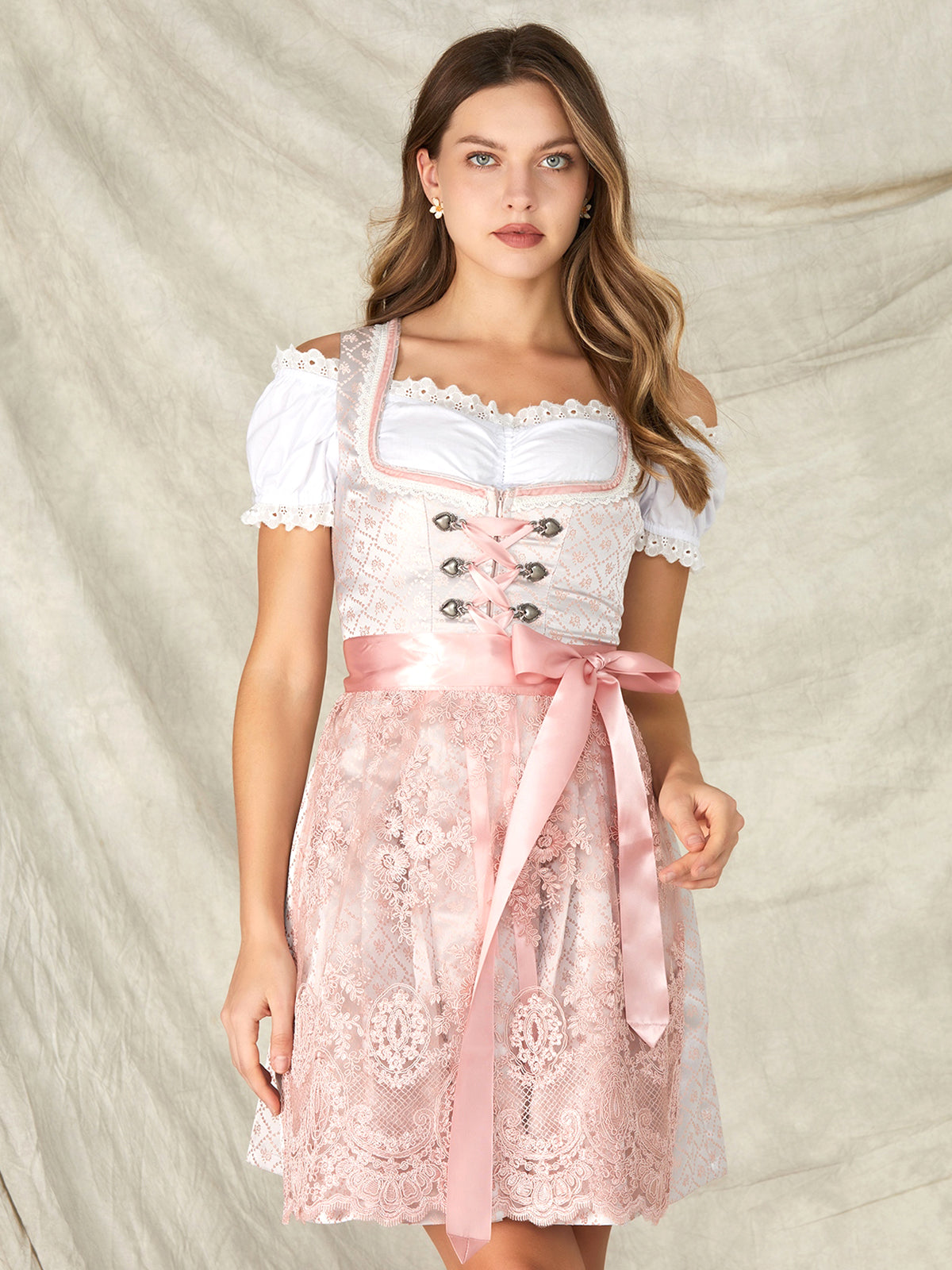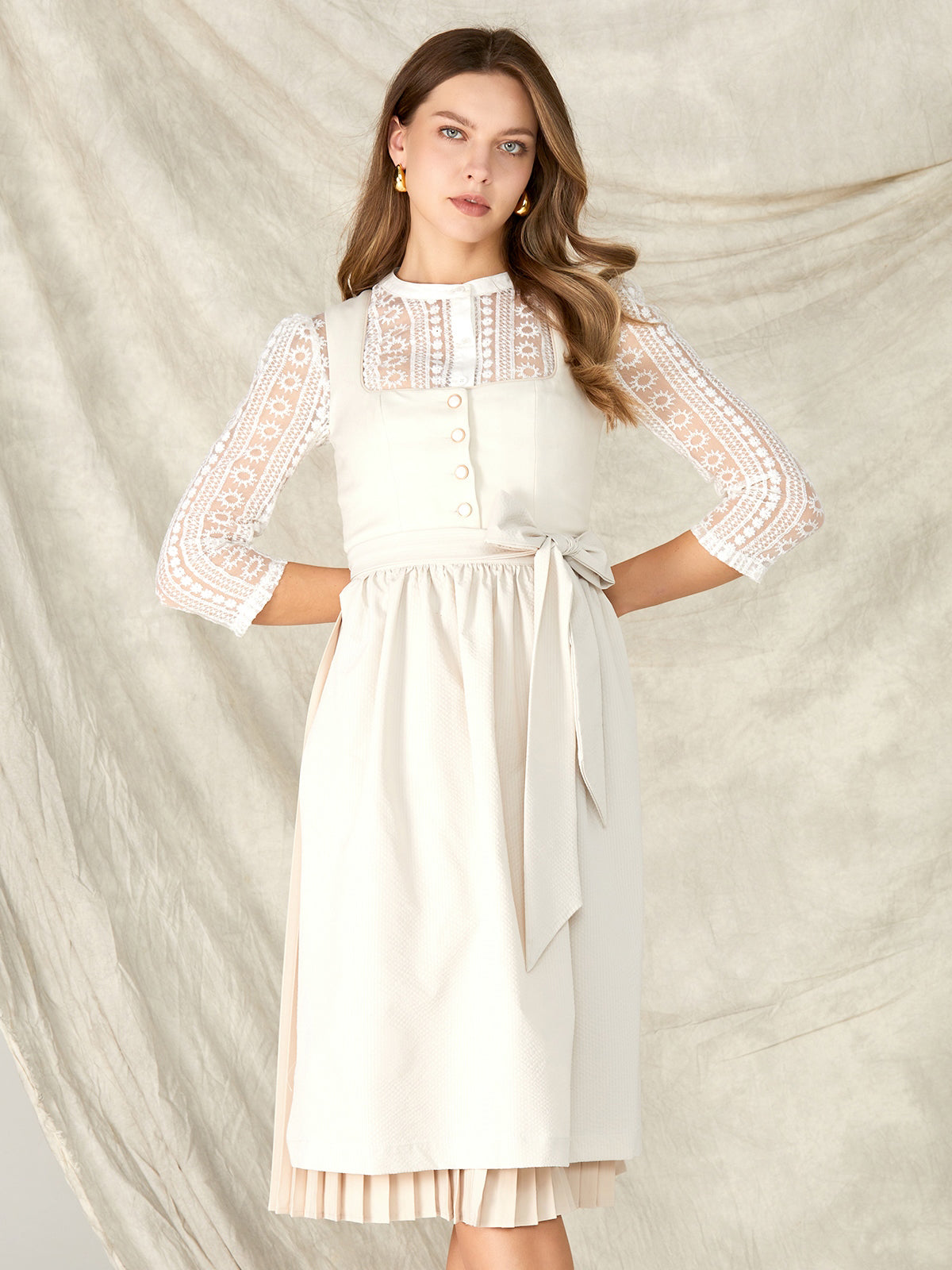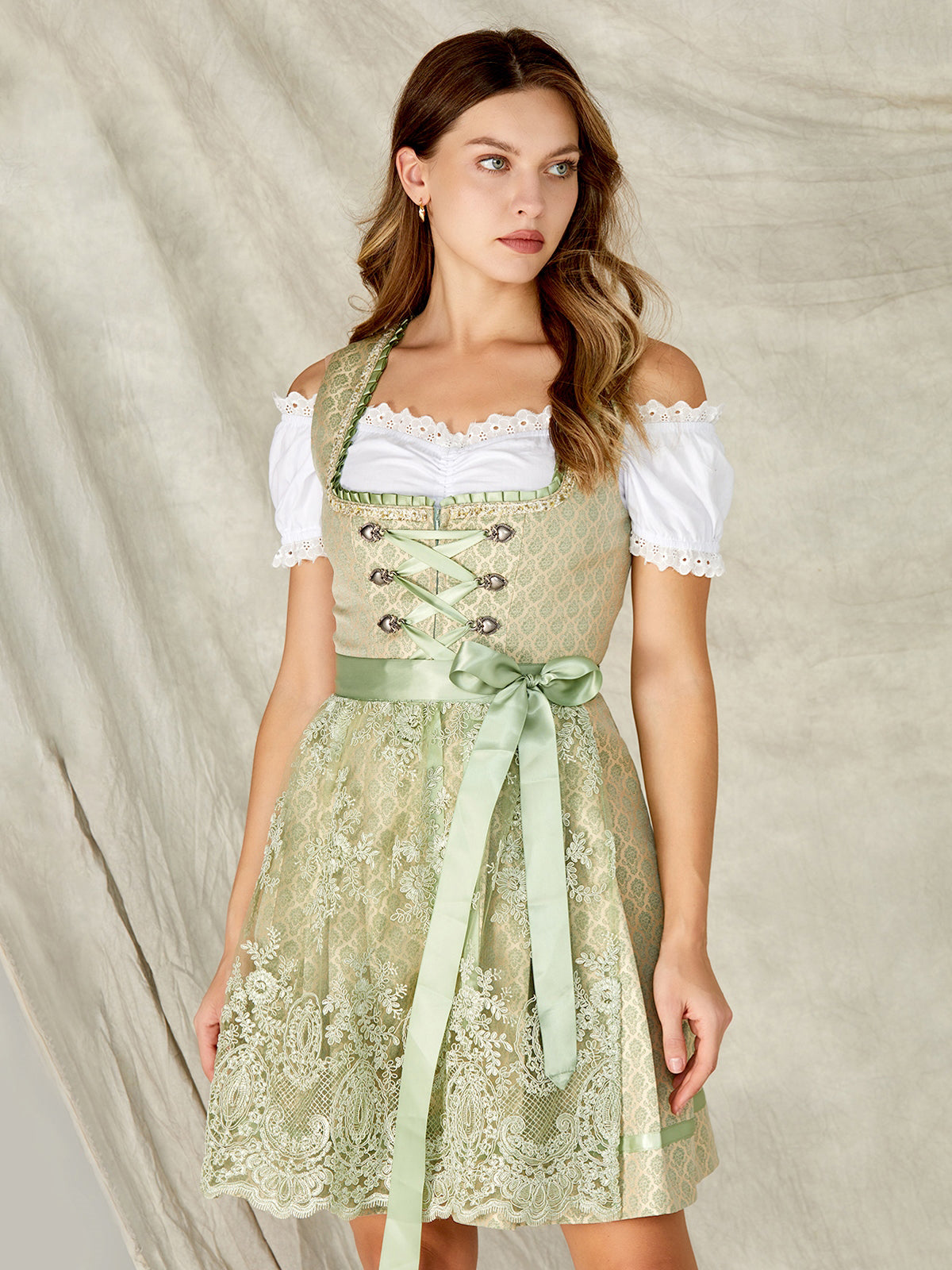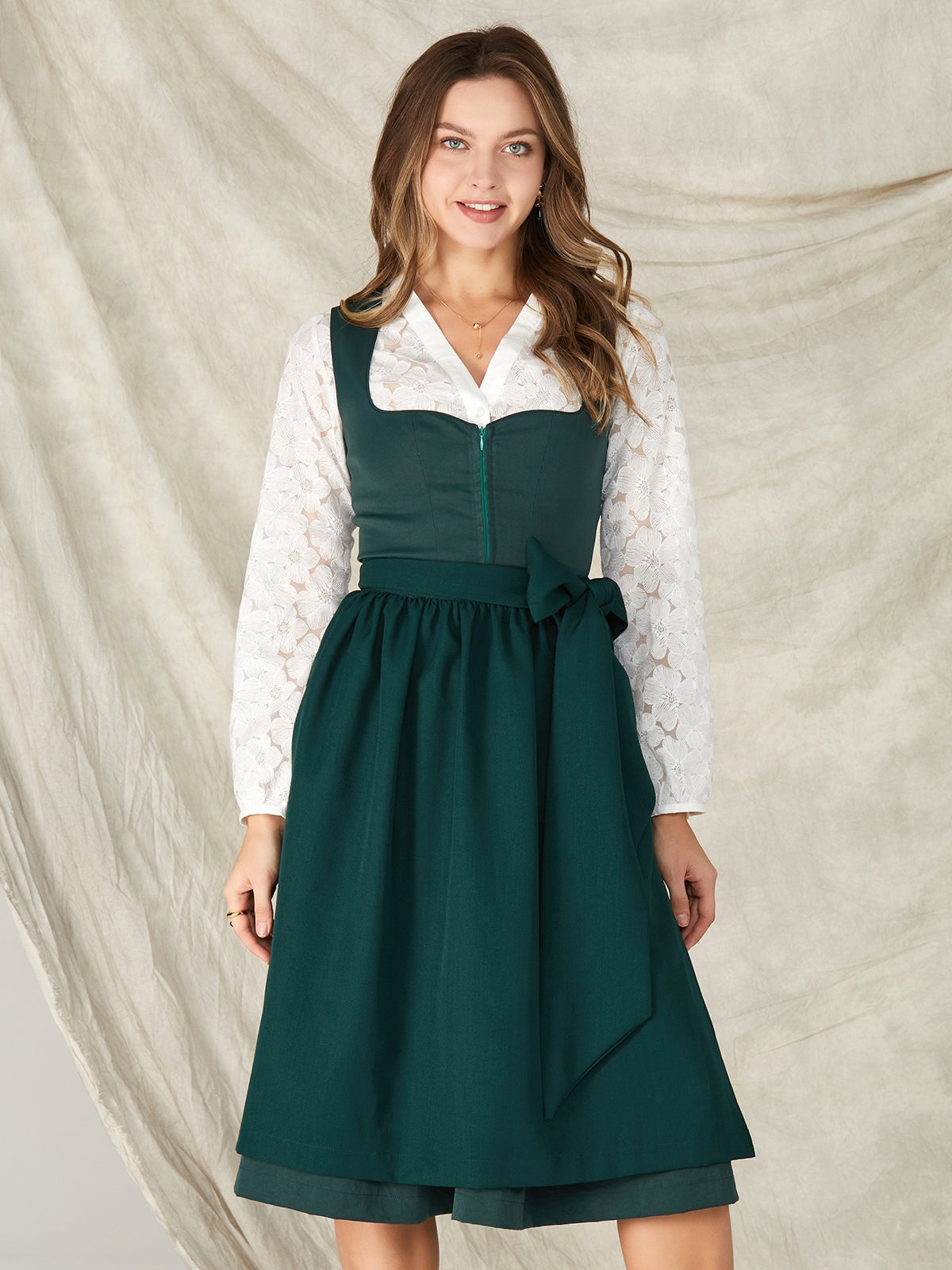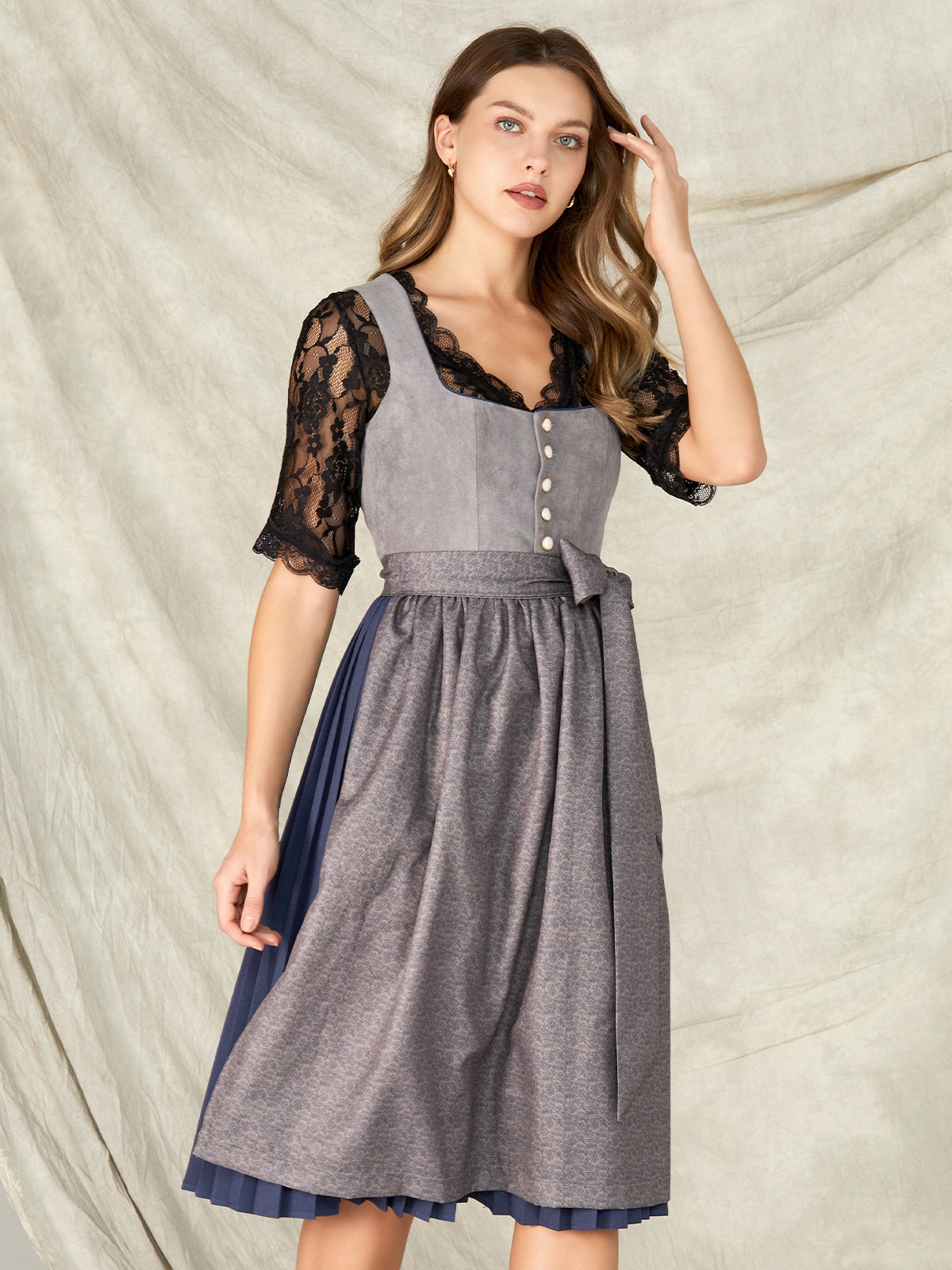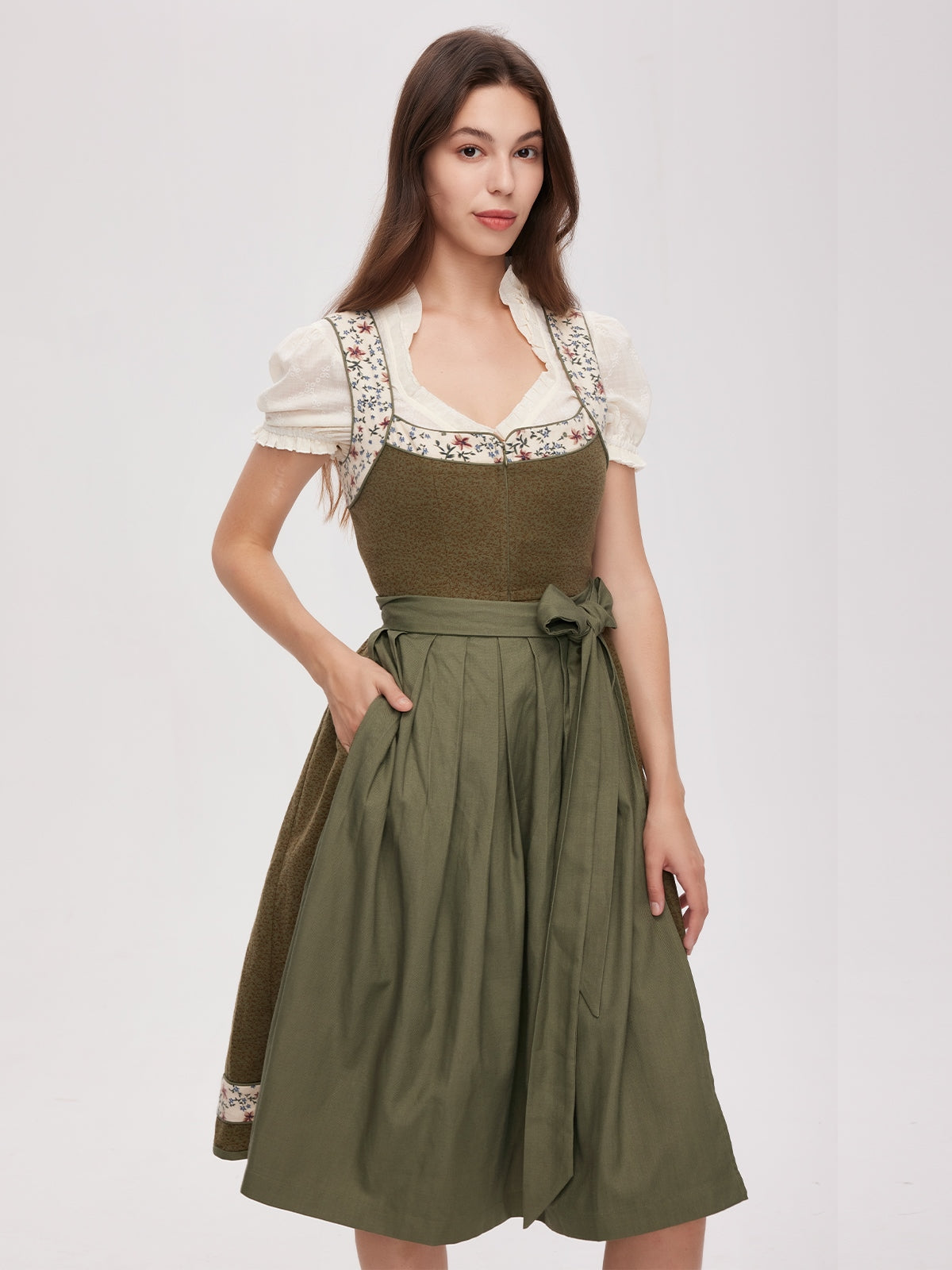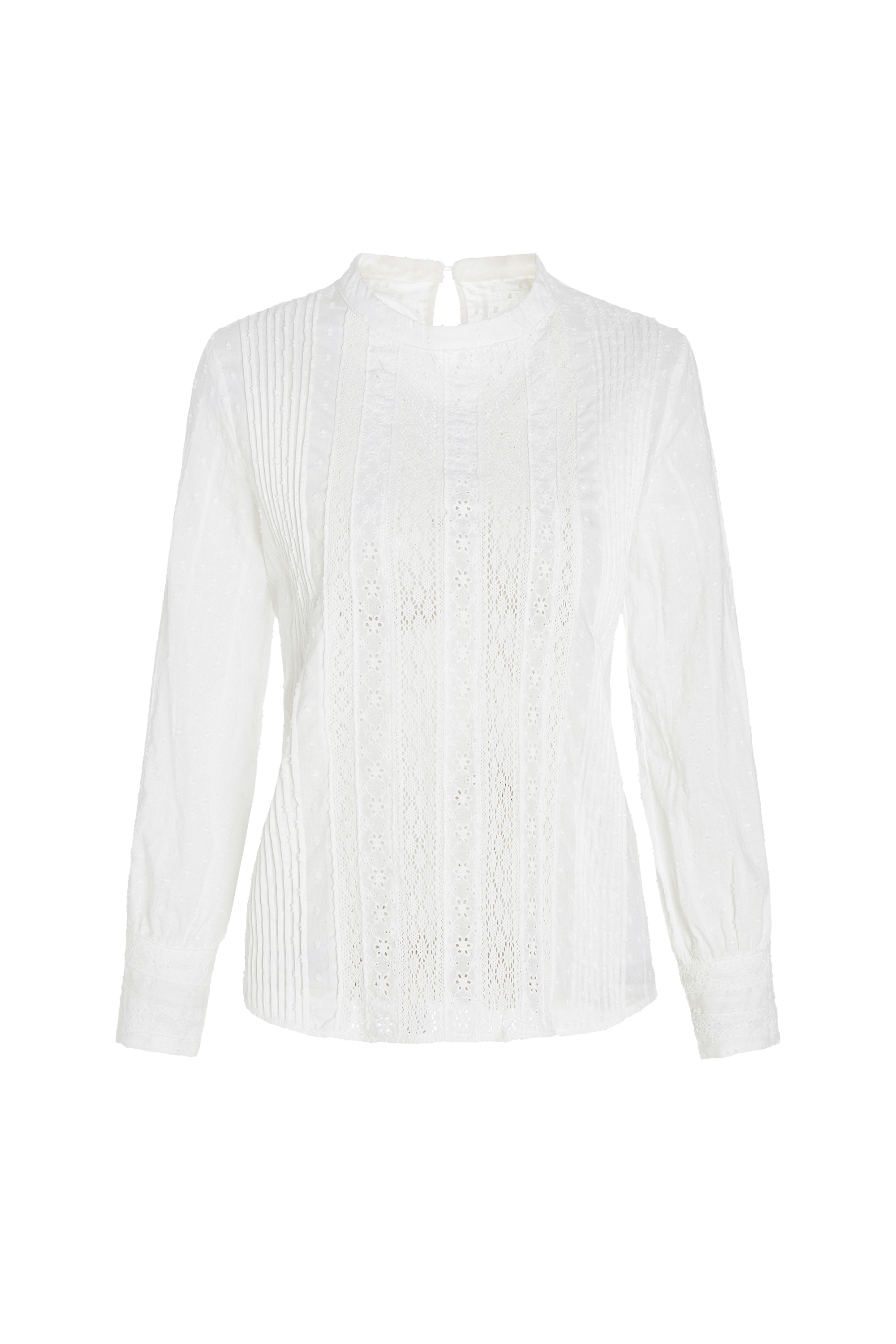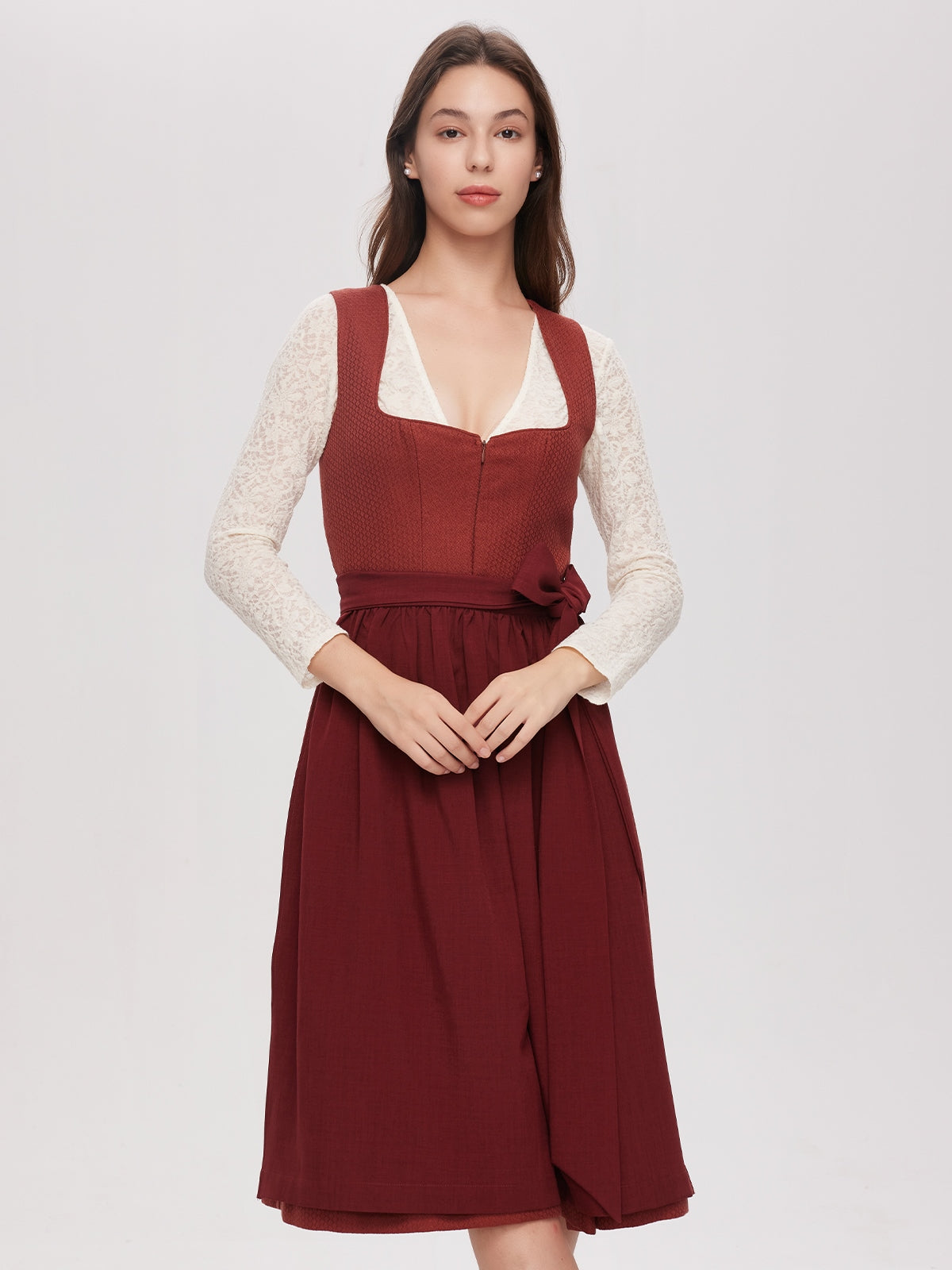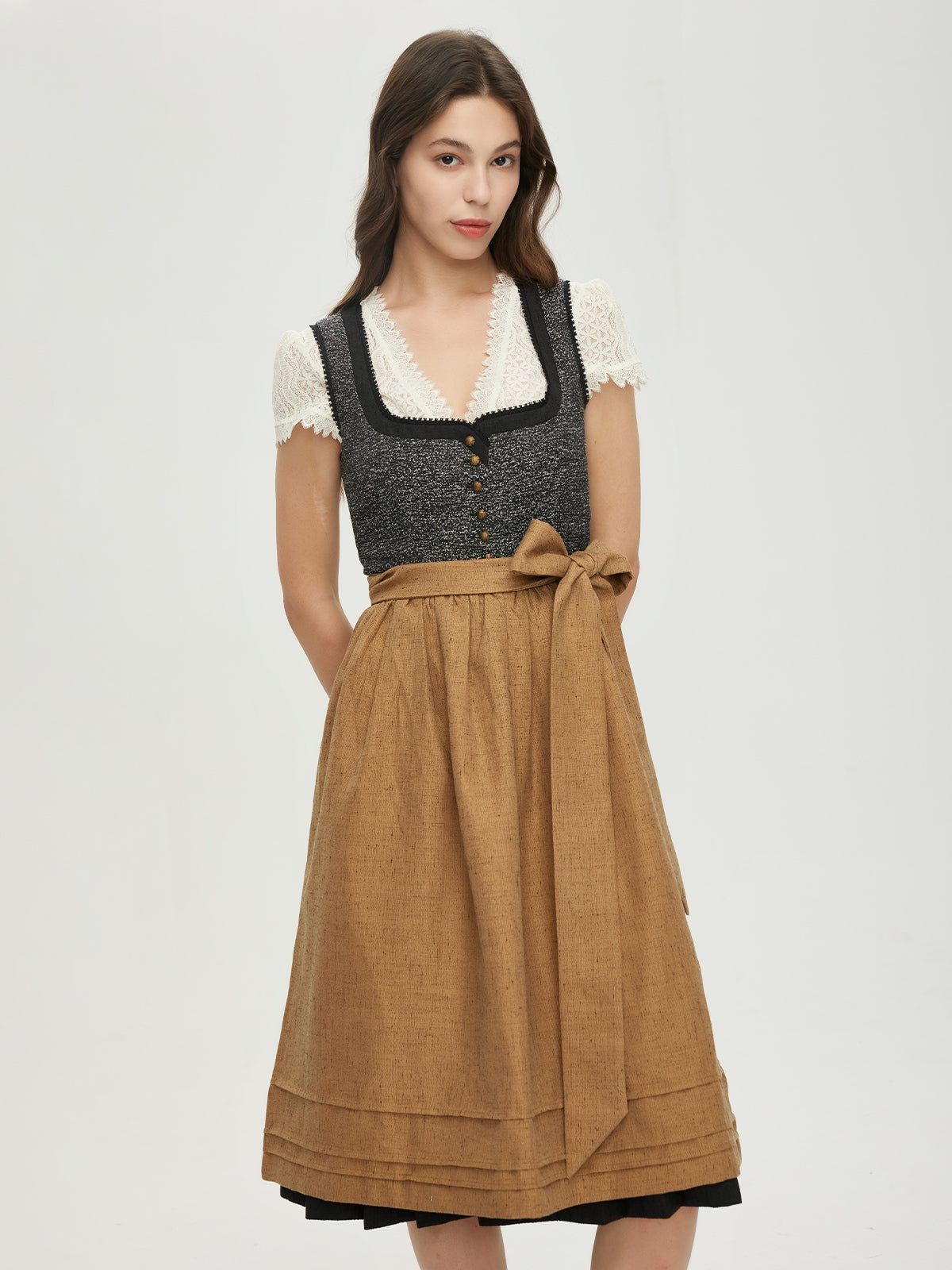The Beginnings: The Dirndl as a Peasant Costume in the 17th Century
In the 17th century, the dirndl was initially a simple work garment for peasant women in Bavaria, Austria, and South Tyrol. It consisted of a blue or black skirt, a white shirt, and a narrow, colored belt. The garment was practical and adaptable to the physically demanding work in the countryside. Peasant women wore it to protect themselves from the elements and to increase their work efficiency.
Early dirndls weren't particularly elaborately designed. The fabrics were inexpensive and durable, and the shapes were simple and functional. The colored belts and small embellishments like seams and embroidery were often the only elements that distinguished the dirndl from other workwear. The green hue wasn't yet as popular at the time, but over time, it gained in importance. This is also where the first mention of " dirndl blouse green " begins. The green dirndl blouse indicated a connection to nature and peasant life, and it was often popular among women who lived in the countryside.
The adaptation to the Rococo style in the 19th century
In the 19th century, the dirndl underwent a dramatic transformation. With the rise of the Rococo style in Europe, the dirndl was also influenced by elegant and more ornate fashion tastes. The simple forms were enhanced, and new elements such as floral patterns, ruffles, and delicate embroidery were added.
The skirt became longer and flowing, and the blouse was cut tighter to emphasize the female figure. Green tones became increasingly popular, whether in the form of "dirndl midi green" or "dirndl velvet green." The color green was seen as a symbol of freshness and life and was particularly popular during the Romantic era, which coincided with the Rococo modification of the dirndl. Fashion also changed rapidly in the cities, and the dirndl gained popularity there as well, not only as a traditional costume but also as elegant attire for festive occasions.
The Dirndl in the Nazi era: political instrumentalization
During the National Socialist era in Germany and Austria, the dirndl was used for political purposes. The Nazi regime viewed the traditional costume as a means of strengthening the national community and creating a national identity. The dirndl was promoted as a "true" German costume and promoted in schools and public events.
However, dirndl fashion was also influenced by Nazi ideology. The forms became stricter and simpler to reflect racist ideas of beauty and honor. The green color was increasingly used in the "green dirndl blouse," " green midi dirndl ," and "green velvet dirndl," as green was also used as a symbol of national identity and joie de vivre in Nazi propaganda. However, this was an abuse of the dirndl, which was originally a simple and harmless peasant costume.
The Dirndl in the High - Fashion - Area: The Prada - Inspiration
In recent years, the dirndl has also received considerable attention in the high-fashion world. A notable example is the Prada Spring/Summer 2019 collection. Prada incorporated elements of the dirndl into its designs, interpreting it in a modern and innovative way.
The Prada collection featured repeated green hues, such as the "dirndl blouse green," "dirndl midi green," and "dirndl velvet green." The blouses featured the typical dirndl lace collars and narrow sleeves, while the skirts featured the flowing shapes and length of a classic dirndl skirt. Prada thus demonstrated that the dirndl is not only a traditional costume, but also a timeless fashion statement that can be integrated into the modern fashion world.
The future of the dirndl
The dirndl has thus evolved from a simple peasant costume into a high-fashion item. The green hues, so prevalent in "green dirndl blouses," "green midi dirndl dresses," and " green velvet dirndl dresses ," remain an important element of the dirndl. They represent not only tradition and the connection to nature, but also the costume's flexibility and adaptability to contemporary fashion demands.
In the future, there will certainly be further modifications and interpretations of the dirndl. It will be both preserved in tradition and further developed in the high fashion world. The dirndl will therefore continue to play an important role in fashion history, forming a bridge between the past and the future.
Overall, the history of the dirndl demonstrates how a simple work garment has evolved into an internationally recognized fashion symbol. The green hues in "green dirndl blouses," "green midi dirndl dresses," and "green velvet dirndl dresses" have not only aesthetic but also cultural and historical significance. They are part of the dirndl's fascinating journey from peasant dress to high fashion.

